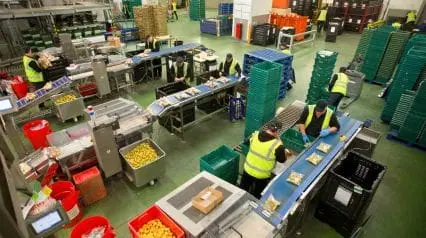What is 5S in Manufacturing?
5S is a lean principle aimed at reducing waste and being more efficient in how things are done. The manufacturing and production methodology is a systematic approach to organizing and managing the workplace. Each “S” in 5S refers to different principles, which are Sort (Seri), Set in Order (Seiton), Shine (Seiso), and Standardize (Seiketsu). These five principles are all designed to streamline operations, reduce waste, enhance efficiency, and create a clean and organized work environment.
Importance & Benefits
There are many benefits to applying lean manufacturing techniques in your manufacturing processes. However, the biggest benefit available is that it improves efficiency. Since the methodology is designed to reduce waste and streamline operations, you can expect productivity to improve and costs to go down when you implement this philosophy effectively as 5S reduces wasted time searching for tools and materials, resulting in improved operational efficiency.
Another big benefit of applying 5S principles in manufacturing is that you enhance safety. Regardless of the type of product you manufacture, your workers face various risks whenever they enter the field. With 5S principles built into the workplace culture, you promote a safer workplace, reducing accidents and incidents that put employees in danger.
On top of that, 5S manufacturing processes simultaneously improve product quality and reduce waste. One of the main driving principles of 5S is ensuring that you have minimized or don’t have waste while producing top-quality products. This not only improves overall performance but can also reduces overall costs.
How to Apply 5S in Manufacturing
Applying 5S in your manufacturing workspace may take some time and effort, but the entire process is easier and quicker than you may expect. All you have to do is follow each principle in order. Let’s take a quick look at how it may look when you apply 5S in manufacturing practices.
Sort Out Your Workspace
The first “S” stands for sort. Known as Seiri in Japanese, this nvolves sorting through all items in the workplace and keeping only the essential ones. Identify and remove any unnecessary tools, materials, or equipment that may be cluttering the workspace. By decluttering, you create a more organized and efficient environment, enabling your team to locate necessary items quickly and perform their tasks with greater ease..
Set Things in Order
The next step is Setting in Order, or Seiton. This basically means organizing your workplace in the best possible way to improve efficiency. Assign specific locations for each item, and clearly label storage areas to reduce time, minimize mistakes, and facilitate a smoother workflow.
Shine and Maintain the Workplace
The Shine or “Seiso” step in 5S involves cleaning and maintaining a standard of cleanliness in the workplace. This is because clean and organized workplaces are much safer and promote productivity. egular cleaning of machinery, workstations, and floors not only extends their lifespan but also prevents accidents and reduces downtime. By instilling a sense of pride in maintaining a spotless environment, the Seiso element of 5S ensures that cleanliness becomes a part of the organizational culture.
Standardize Your Processes
The “Seiketsu” or Standardize step in 5S is all about creating standard processes for the team to follow. By creating a standardized approach to 5S implementation, you ensure that all team members follow the same principles consistently. Regular audits and inspections help to identify deviations and provide opportunities for continuous improvement.
Create Your Own 5S Checklist
Eliminate manual tasks and streamline your operations.
Get started for FREESustain the Practices and Ingrain it Into the Culture
Lastly, you need to sustain all of the practices you implement aimed at boosting efficiency. Additionally, it also means creating a culture of continuous improvement in your workplace. That way, the organization always look to improve their processes, boost efficiency, and streamline their workflows.




